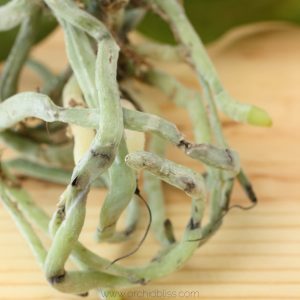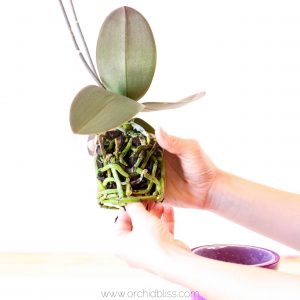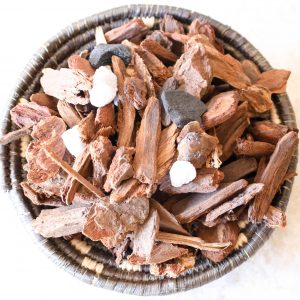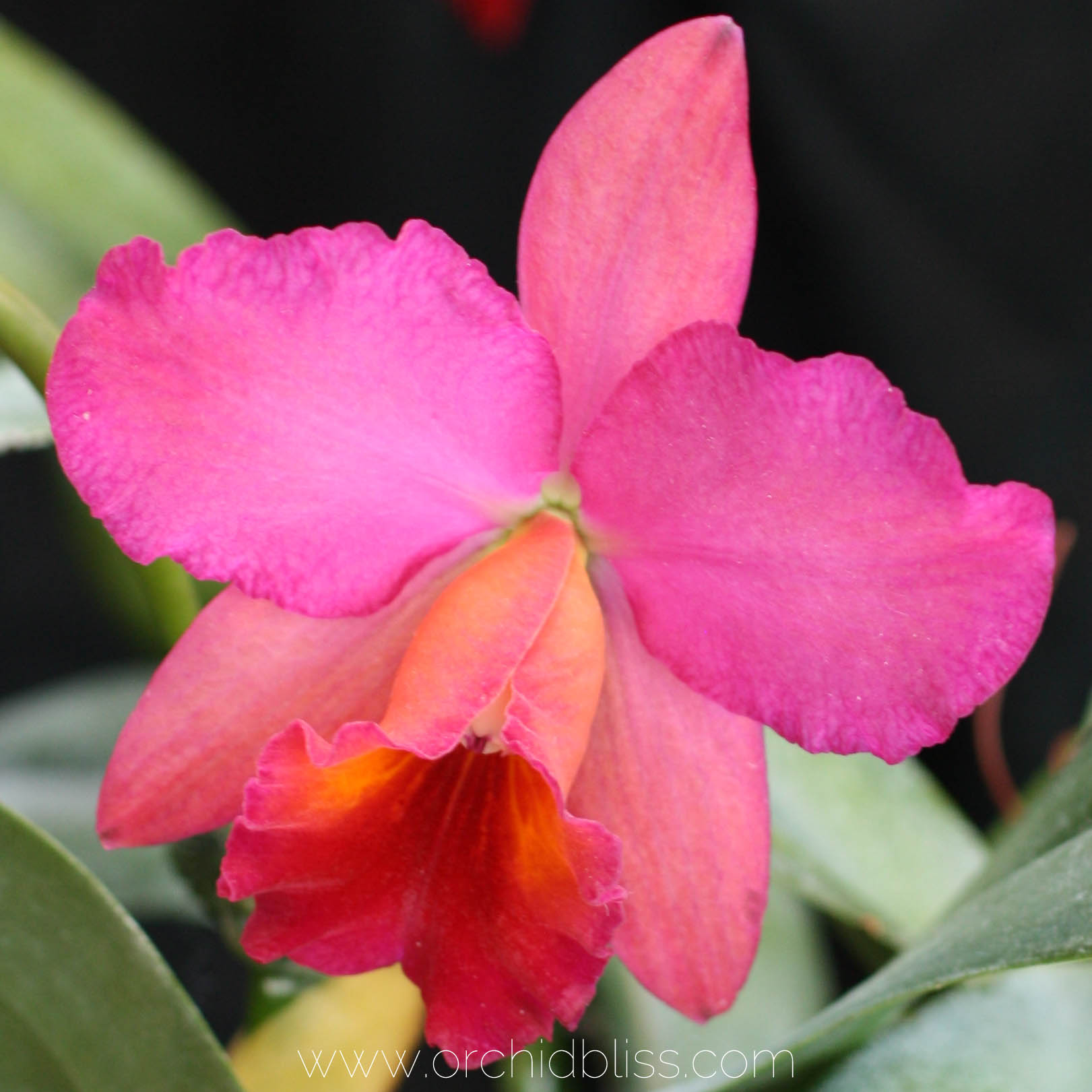
There are two basic types of orchids: monopodial and sympodial. Understanding the differences will have a big impact on how you care for your orchid and what you can expect from your orchid in terms of FLOWERS. Monopodial and sympodial describes the growth pattern of different types of orchids. Growth pattern simply refers to the way the orchid grows. This includes everything from the root system to the leaves and flower stalks.
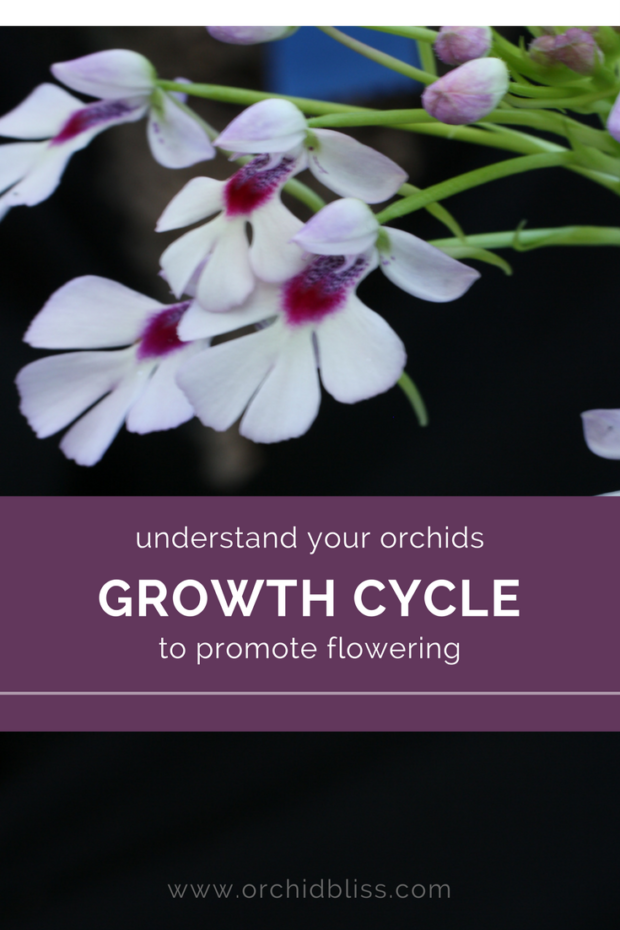
Some of the links on this page may be affiliate links. Click here to learn more.
Monopodial and Sympodial Orchids
Monopodial Orchids
The most common types of monopodial orchids include the Phalaenopsis and Vanda. These orchids grow off a central, vertical stem with leaves growing off each side. Each year your orchid should grow 1 or 2 more leaves. Watch for new flower spikes emerging 2 or 3 leaves down from the newest leaves. Even if your orchid is not currently in bloom, but it is growing leaves then smile because you know that these leaves signal future flowers. As your orchid matures you may eventually see a flower spike growing on either side of the central stem–at the same time!
To help you further, start by downloading my free cheat sheet to see where to cut the orchid flower spike after blooms have faded to trigger re-blooming. Click here, for the cheat sheet. It’ll be super helpful.
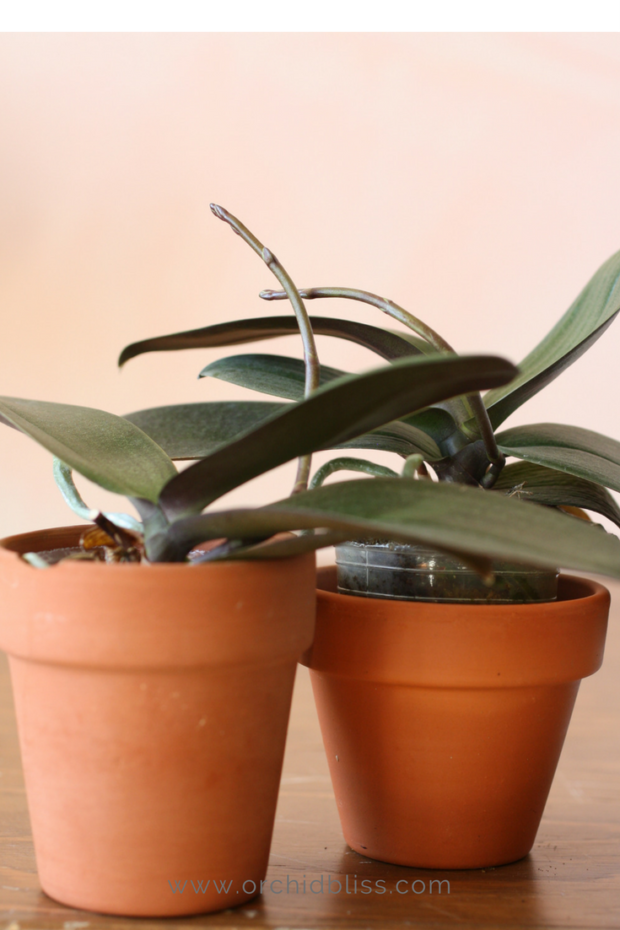
New flower stalks grow from a central flower stem on this mini phalaenopsis.
The Monopodial Base
The base of a monopodial orchid is an interesting place to keep an eye on. The base is where flower stalks and aerial roots emerge. And, it’s also the place where small nodes, develop keikis- or baby orchids. These types of keikis are called “basal keikis.” This type of keiki should not be separated from the mother plant because this type of keiki shares the same root system as the mother plant.
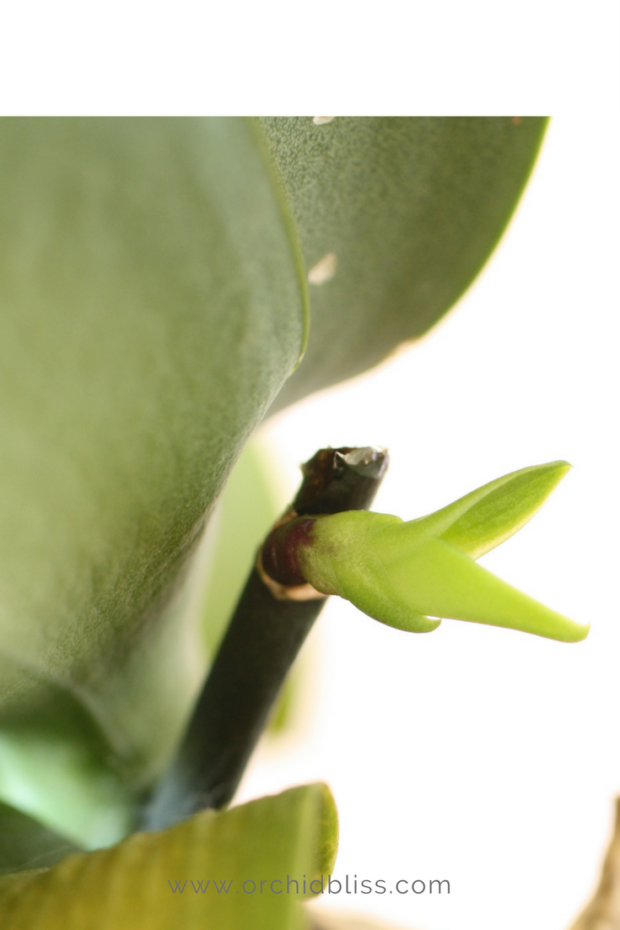
This keiki is growing off of a clipped flower stalk. Soon it will develop its own roots. When the keiki’s roots are about 3 inches long the keiki can be separated from the parent plant. If the keiki were growing from the base of the orchid rather than a flower stalk I would leave it in place.
Sympodial Orchids
Unlike monopodial orchids that grow from a single stem, sympodial orchids have multiple stalks or more accurately, pseudobulbs, which increase in number every year. These orchids grow from a horizontal stem. Usually, these new pseudobulbs emerge from the side of an older pseudobulb. Once your sympodial orchid has finished flowering watch for the emergence of new pseudobulbs which should grow even larger than the older pseudobulb. These new bigger pseudobulbs indicate where new flower stalks will grow. Pseudobulbs serve another purpose as well, water storage. Try to keep your orchids’ pseudobulbs nice and plump, not withered and dry.
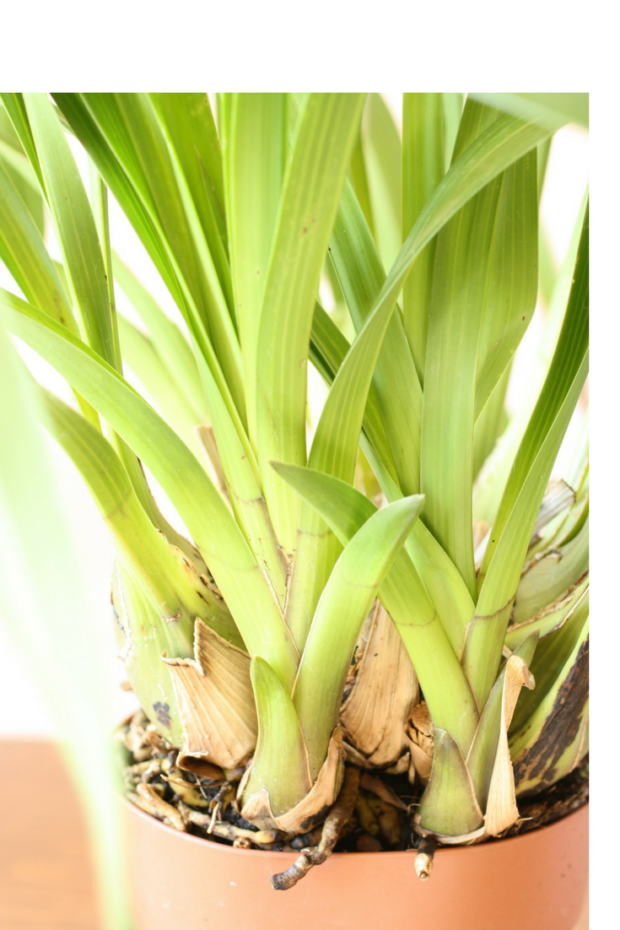
New pseudobulbs emerge from the outside of an older pseudobulb. These new pseudobulbs will increase in size and flower stalks will soon begin to grow.
Sympodial orchids usually flower once a year but can put on a real show when they do bloom because several flower stalks will shoot up at once, producing a profusion of flowers.
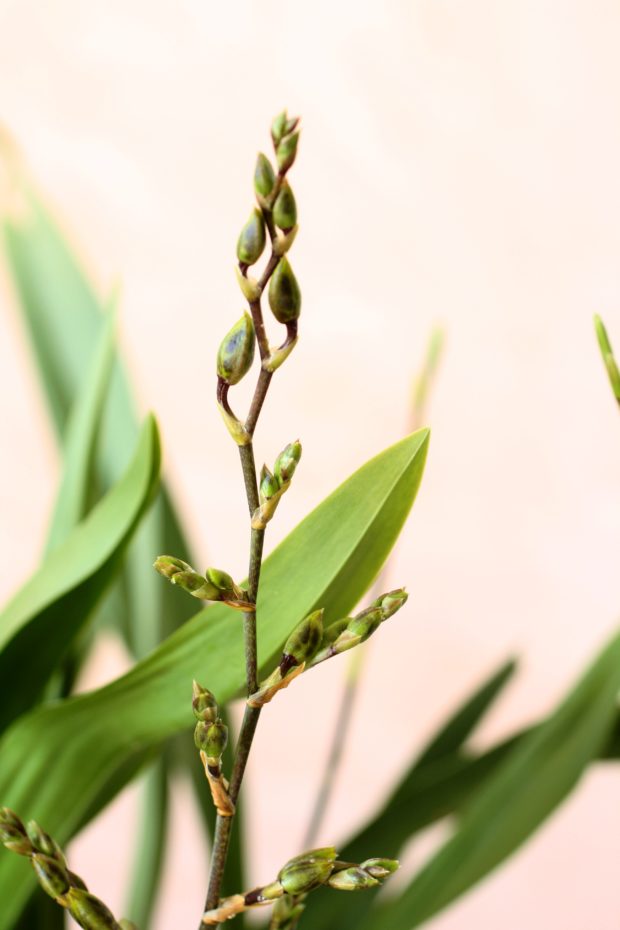
Throughout the past year, I watched as new pseudobulbs grew and developed on this Oncidium. After a long wait, the flower stalks are loaded and ready to burst open with a fragrant abundance of blooms.
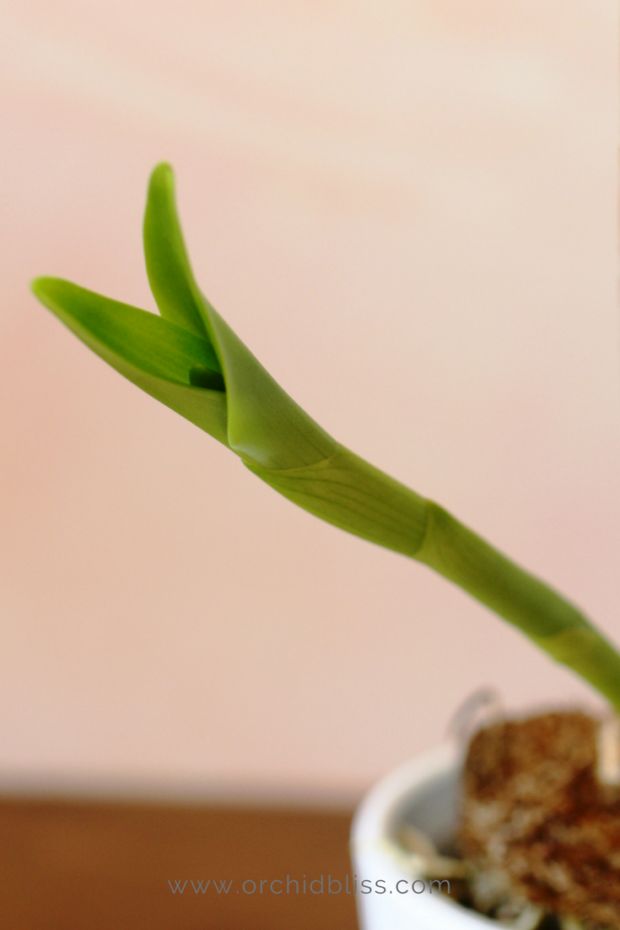
Happy day! The new pseudobulb on this Dendrobium tells me that the high light requirements of this orchid are being met. Soon I will be rewarded with flowers.
It’s All About Growth Patterns
Now that you understand the growth pattern of your orchids, you’ll be that much better at caring for your orchids.


